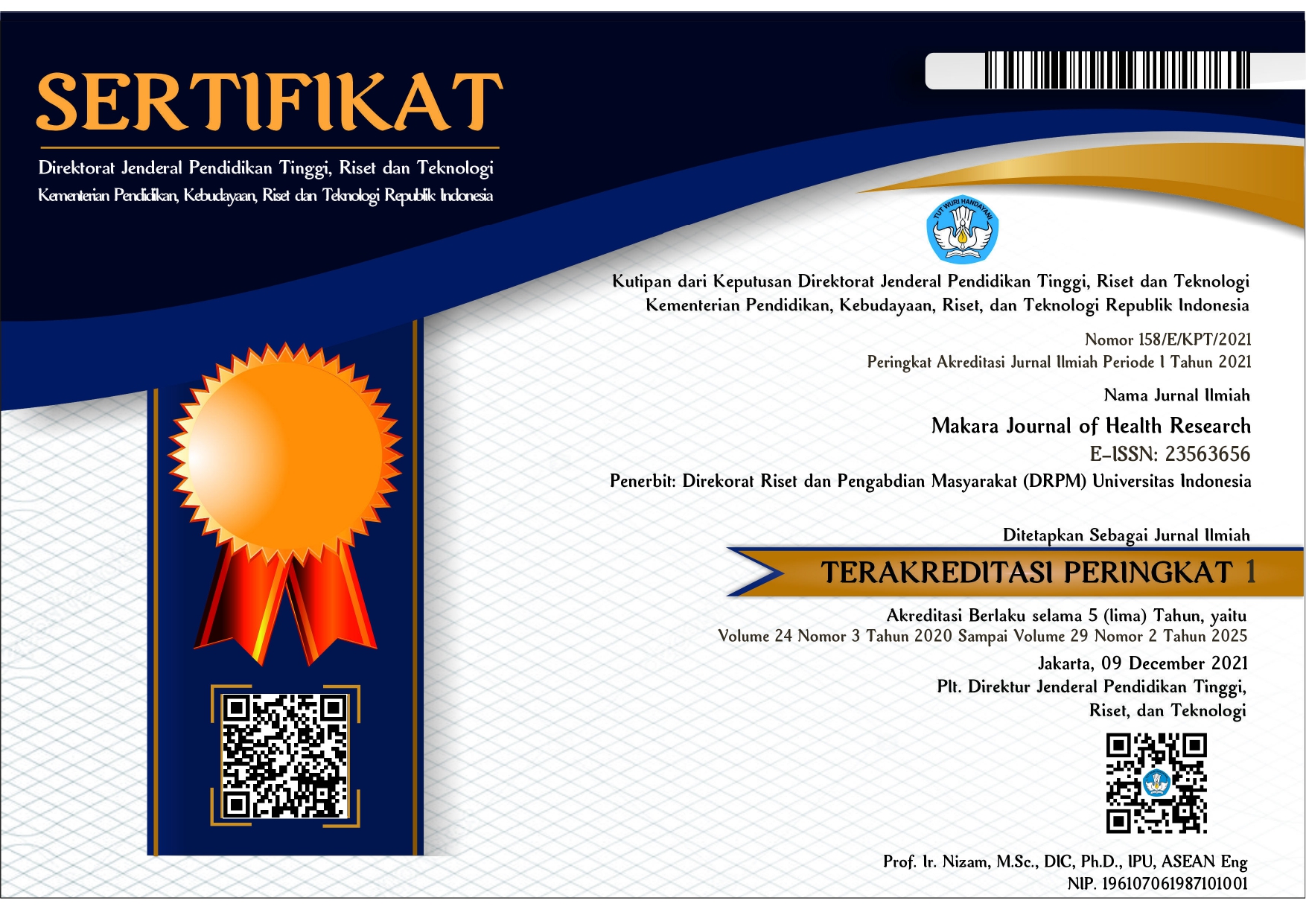ORCID ID
Istiak Rahman: 0009-0002-7989-1119
Mahedi Hasan: 0009-0005-4991-5353
Abstract
Background: The audiologic assessment guidelines of the American Speech-Language-Hearing Association (ASHA) encouraged functional auditory skills assessment, appropriate for age. The Auditory Skills Checklist (ASC) assessment tool was developed from the necessity to assess the auditory skills of young children with Sensorineural Hearing Loss (SNHL). The aim of this study was to adapt a Bengali version of the ASC checklist from the original English version and then to test its reliability and validity.
Methods: The method of forward-backward translation and cognitive debriefing was employed to produce a culturally sensitive Bengali version of the checklist. The data was analyzed for the internal consistency of items, inter-rater agreement of items, temporal reliability, and convergent validity.
Results: The adapted Bengali version of the ASC produced excellent internal consistency (Checklist total = Cronbach’s alpha 0.980 and domain specific Cronbach’s alpha of 0.958, 0.921, 0.908 and 0.932 respectively), substantial level of inter-rater agreement (κ = 0.668 to 0.845 and p < 0.01), excellent temporal reliability (ICC 0.974 and p < 0.01) and convergent validity (AVE > 0.5).
Conclusion: The adapted version of the ASC showed excellent reliability and validity to facilitate functional auditory skills assessment and intervention.
References
- Haile LM, Kamenov K, Briant PS, Orji AU, Steinmetz JD, Abdoli A, et al. Hearing loss prevalence and years lived with disability, 1990–2019: Findings from the Global Burden of Disease Study 2019. Lancet. 2021;397:996–1009.
- Wen C, Zhao X, Li Y, Yu Y, Cheng X, Li X, et al. A systematic review of newborn and childhood hearing screening around the world: Comparison and quality assessment of guidelines. BMC Pediatr. 2022;22:160.
- Hall JW. Effective and efficient pre-school hearing screening: essential for successful EHDI. J Early Hear Detec Interv. 2016;1:2–12.
- Rahman MM, Alam MI, Mansur M. Functional difficulty among young children in Bangladesh: An analysis of nationally representative data. PloS One. 2024;19:e0300403.
- Fatema K, Ferdousy SF, Rahman M, Akhter S. Intellectual disability in young children with hearing impairment: Study from a tertiary care center in Bangladesh. Paediatr Nephrol J Bangl. 2022;7:6.
- Schramm B, Bohnert A, Keilmann A. Auditory, speech and language development in young children with cochlear implants compared with children with normal hearing. Int J Pediatr Otorhi. 2010;74:812–9.
- American Speech-Language-Hearing Association. Guidelines for the Audiologic Assessment of Children From Birth to 5 Years of Age [Guidelines]. Rockville: American Speech-Language-Hearing Association; 2004. Available from www.asha.org/policy.
- Meinzen-Derr J, Wiley S, Creighton J, Choo D. Auditory skills checklist: Clinical tool for monitoring functional auditory skill development in young children with cochlear implants. Ann Oto Rhinol Laryn. 2007;116:812–8.
- Suharti A, Putranto FM, Roselina E, Alif WL, Siregar ES. Validity and Reliability Test of Adaptation Auditory Skills Checklist Indonesian Version on Patients with Hearing Problems at Universitas Indonesia Hospital. Malays J Med Health Sci. 2024;20:225–8.
- Bicas RD, Guijo LM, Delgado-Pinheiro EM. Oral communication and auditory skills of hearing impaired children and adolescents and the speech therapy rehabilitation process. Rev CEFAC. 2017;19:465–74.
- Young NM, Grohne KM. Comparison of pediatric Clarion recipients with and without the electrode positioner. Otol Neurotol. 2001;22:195–9.
- Padilha RB, Deperon TM, Mendes AC, Novaes BC. Speech perception: Performance parameters and implications for speech therapy with hearing impaired children. Distúrb Comun. 2016;12:38–49.
- Elawady S, Afsah O, Elshawaf W, Abou-Elsaad T. Developing a functional assessment tool for the auditory performance of Arabic-speaking Egyptian hearing impaired children. Int J Pediatr Otorhi. 2019;127:109678.
- Volpatto FL, Rechia IC, Lessa AH, Soldera CL, Ferreira MI, Machado MS. Questionnaires and checklists for central auditory processing screening used in Brazil: A systematic review. Braz J Otorhinolar. 2019;85:99–110.
- Glascoe FP. Early detection of developmental and behavioral problems. Pediatr Rev. 2000;21:272–80.
- Araújo ME, Lima MC, Carvalho WL, Brazorotto JS. Adaptation of the Brazilian Functional Auditory Performance Indicators-Short Version. CoDAS. 2021;33:e20190261.
- Negro AS, García JL, Quevedo MS. Production and evaluation of a Spanish version of the LittlEARS® Auditory Questionnaire for the assessment of auditory development in children. Int J Pediatr Otorhi. 2016;83:99–103.
- Garadat SN, Almasri NA. Translation, adaptation, and validation of the Arabic version of the meaningful auditory integration scale. Cochlear Implants Int. 2023;24:35–42.
- Rahman M, Rana MS, Khandaker G, Rahman MM, Khan MN. National burden of disability in Bangladesh and its socio-demographic correlates. MedRxiv. 2023:2023–09.
- Chowdhury MM, Tarafder KH, Datta PG, Zaman M, Akhtar N, Sultana K. Study on Hearing Impairment in Bangladesh. Chattagram Maa-O-Shishu Hosl Med Coll J. 2021;20:72–6.
- Kabir AL, Chowdhury SS, Rahim Z, Sarker MZ, Chakraborty MR. Degree and Pattern of Hearing impairment among patients attending in Audiology department of a tertiary level Hospital in Bangladesh. Bangl J Otorhinolar. 2020;23:115–21.
- Verma RR, Konkimalla A, Thakar A, Sikka K, Singh AC, Khanna T. Prevalence of hearing loss in India. Natl Med J India. 2021;34:216–22.
- Akram R, Buis A, Sultana M, Lauer JA, Morton A. Mapping gaps and exploring impairment and disability prevalence in South Asian (SAARC) countries: a scoping review. Disabil Rehabil Assist Techn. 2024;1–4.
- Rathnaraajan S, Maharajan R, Nandhan R, Kameswaran M. Prevalence of ear disease among school children in Pondicherry, South India: A cross-sectional survey. Otolaryngol (Sunnyvale). 2019;9:1000379.
- McClintock HF, Kurichi JE, Barg FK, Krueger A, Colletti PM, Wearing KA, et al. Health care access and quality for persons with disability: Patient and provider recommendations. Disabil Health J. 2018;11:382–9.
- Machado RD, Fernandes AD, Oliveira AL, Soares LS, Gouveia MT, Silva GR. Cross-cultural adaptation methods of instruments in the nursing area. Rev Gaucha Enferm. 2018;39:e2017–0164.
- Clark LA, Watson D. Constructing validity: Basic issues in objective scale development. In Kazdin AE, Ed. Methodological issues and strategies in clinical research. 4th ed. Washington: American Psychological Association; 2016. p.187–203.
- Cronbach LJ. Coefficient alpha and the internal structure of tests. Psychometrika. 1951;16:297–334.
- Landis JR, Koch GG. The measurement of observer agreement for categorical data. Biometrics. 1977;159–74.
- Portney LG, Watkins MP. Foundations of Clinical Research: Applications to Practice. Upper Saddle River, NJ: Pearson/Prentice Hall; 2009.
- Kaiser HF. A second generation little jiffy. Psychometrika. 1970;35:401–15.
- Fornell C, Larcker DF. Evaluating structural equation models with unobservable variables and measurement error. J Marketing Res. 1981;18:39–50.
- Guillemin F, Bombardier C, Beaton D. Cross-cultural adaptation of health-related quality of life measures: Literature review and proposed guidelines. J Clin Epidemiol. 1993;46:1417–32.
- Penna LM, Lemos SM, Alves CR. Habilidades linguísticas e auditivas de crianças usuárias de aparelho auditivo. Braz J Otorhinolar. 2015;81:148–57.
Recommended Citation
Rahman I, Hasan M. Adaptation, Reliability, and Validity of the Auditory Skills Checklist (ASC) for Bengali Speaking Children with Severe to Profound Sensorineural Hearing Loss with Hearing Aids. Makara J Health Res. 2025;29.
Creative Commons License

This work is licensed under a Creative Commons Attribution-Share Alike 4.0 International License.


